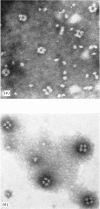Abstract
1. Ribosomes and the tetramer arrangement peculiar to the tissues of chick embryos exposed to low temperatures were separated by sucrose-density-gradient centrifugation, and the effects of variation of the concentrations of Mg2+, Ca2+ and K+ studied. 2. Lowering of the Mg2+ concentration from standard buffer conditions caused a reversible dissociation of tetramers into monomers and of these into subunits. 3. Ca2+ replaced Mg2+ in causing the re-formation of tetramers and monomers from subunits after dissociation in low Mg2+ concentrations. 4. Ca2+ also caused an almost complete conversion of monomers into dimers in the presence of Mg2+. 5. The effect of Ca2+ on the formation of dimers was abolished by pretreatment of the ribosomes with ribonuclease, but the re-formation of tetramers was unaffected. 6. Increase of the K+ concentration from that of the standard buffer caused dissociation of monomers and dimers into subunits. 7. Raised K+ concentration also caused a stepwise alteration of the tetramer from a particle with a sedimentation coefficient of 197S, which constitutes the bulk of the tetramer at low K+ concentrations, first to a 184S peak and finally to material with a sedimentation coefficient of about 155S. 8. The implications of these results on hypotheses of the arrangement of the individual monomers in the tetramer are discussed and a new model for the structure is proposed.
Full text
PDF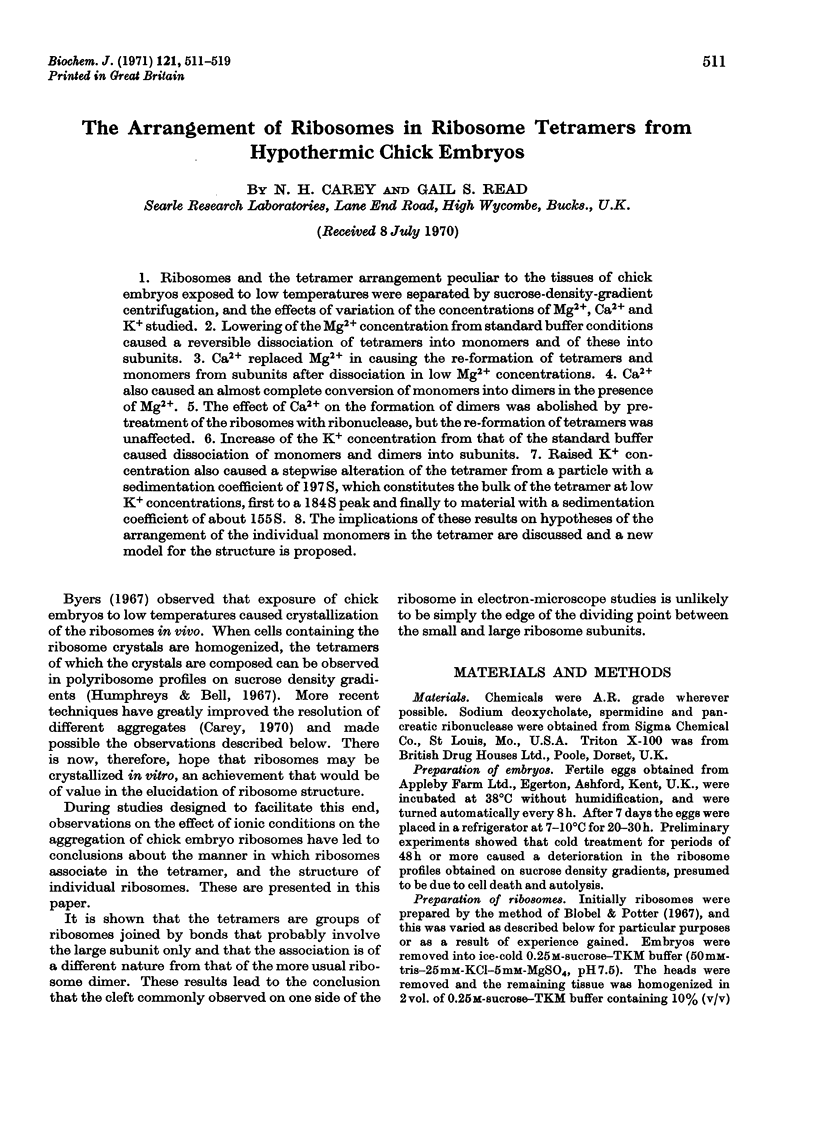
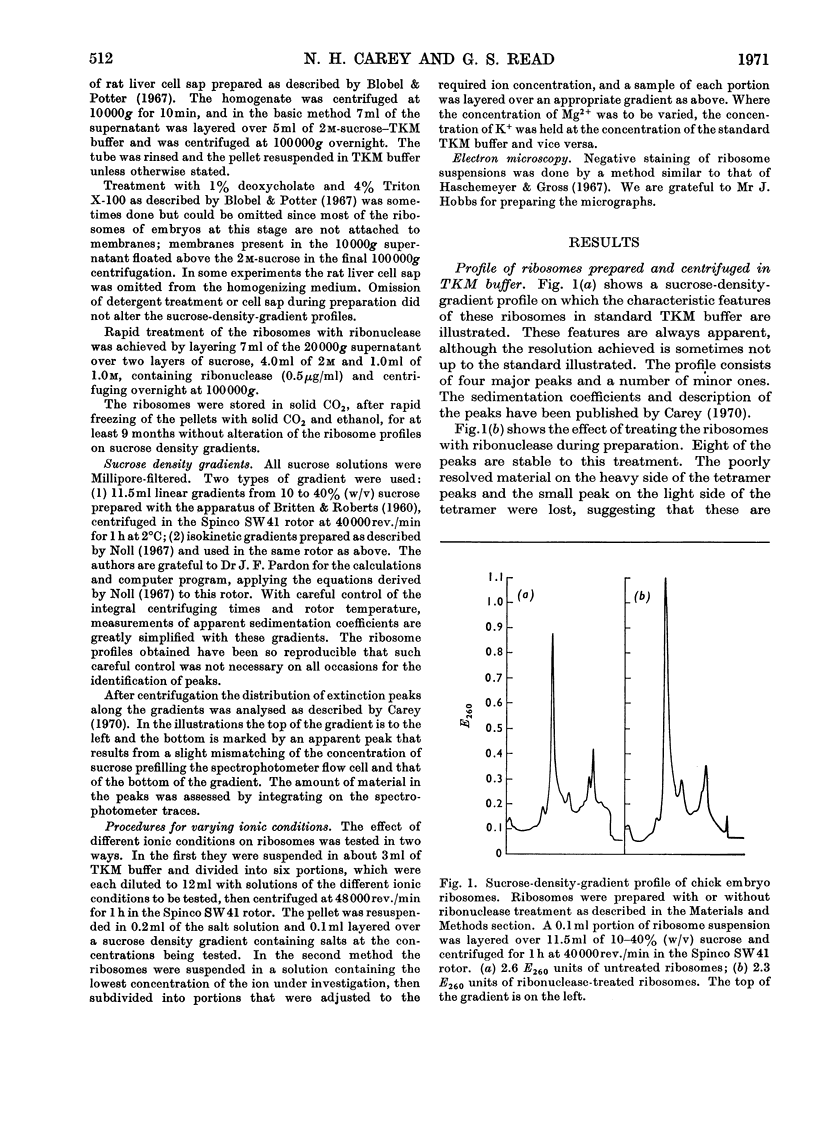
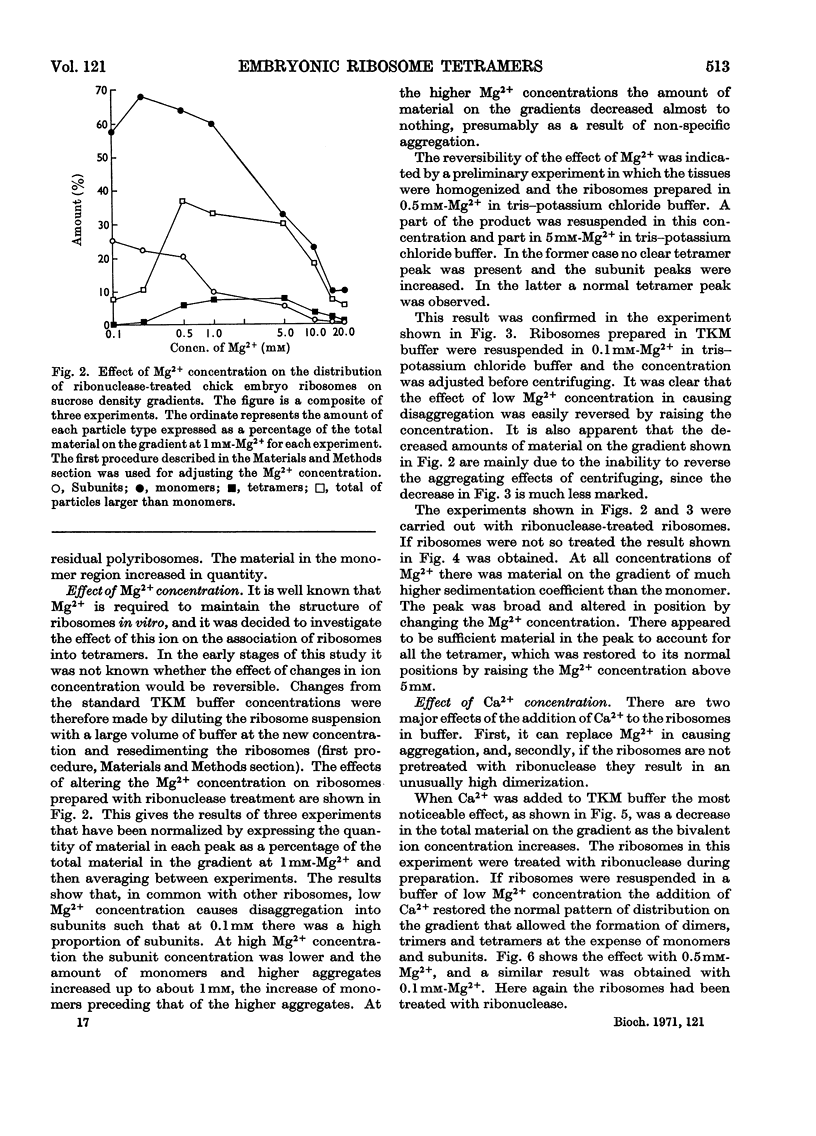
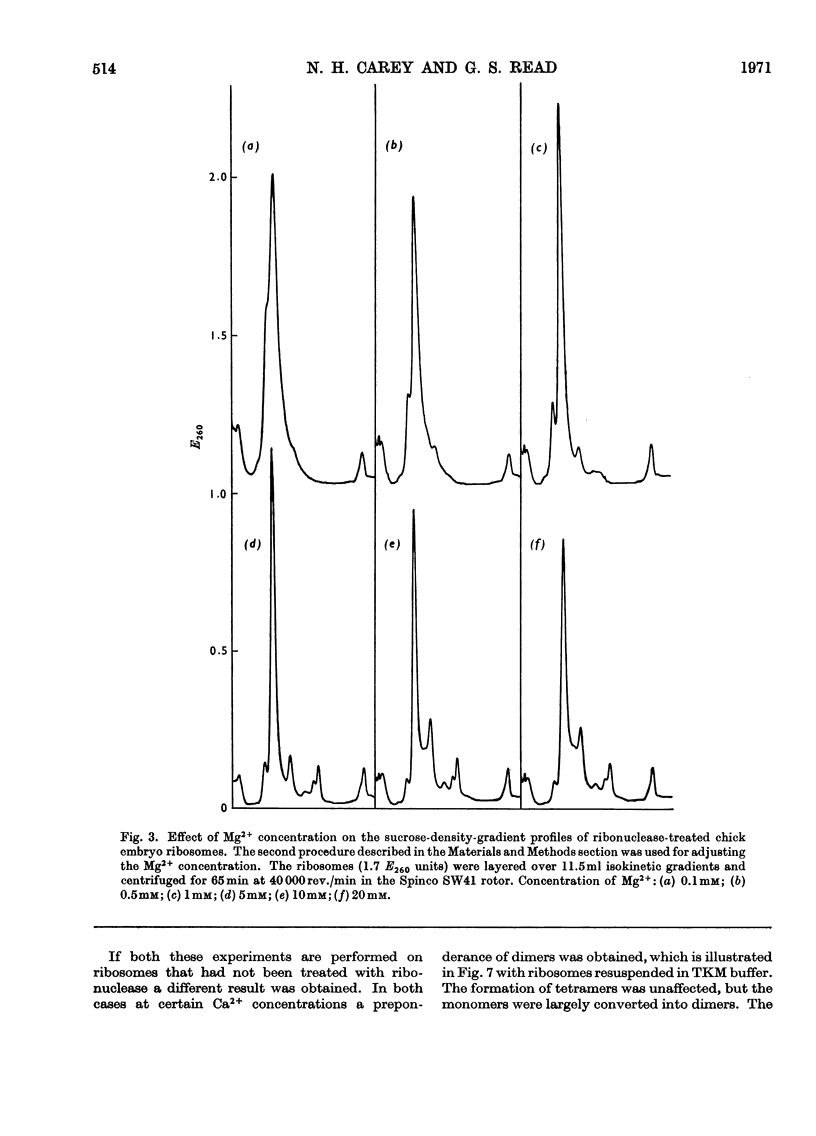
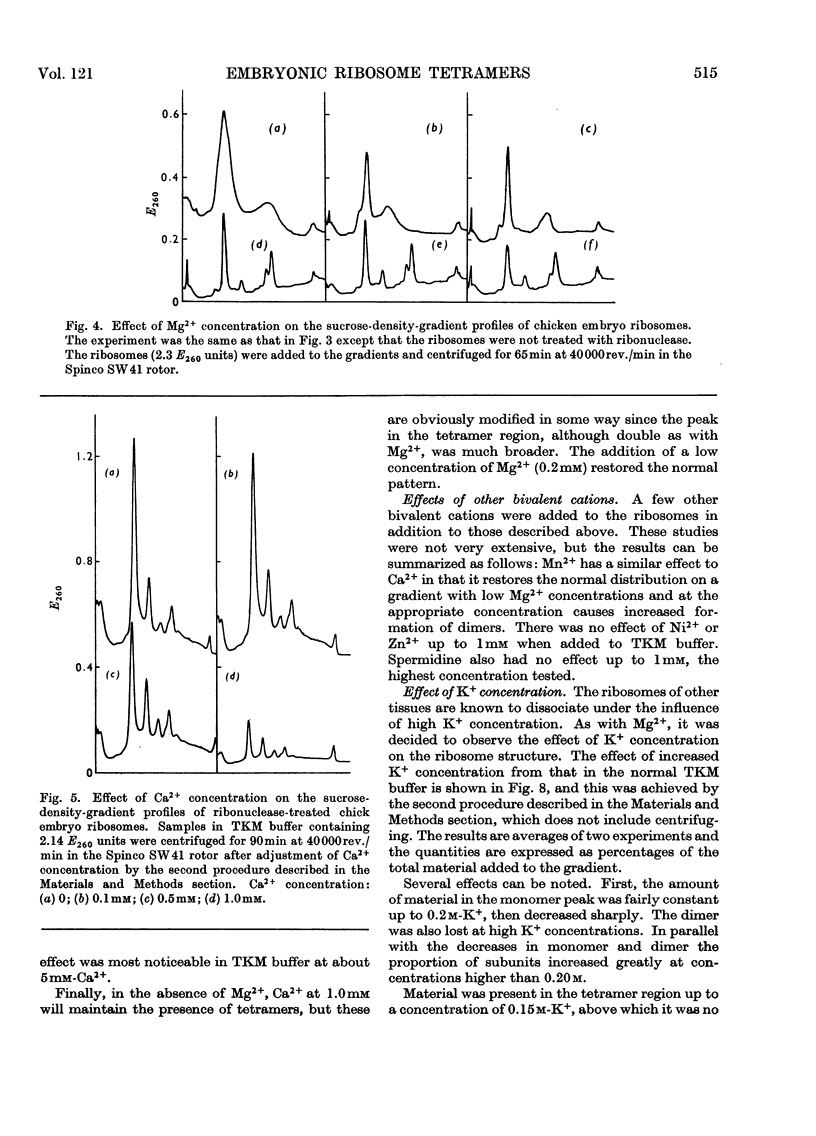
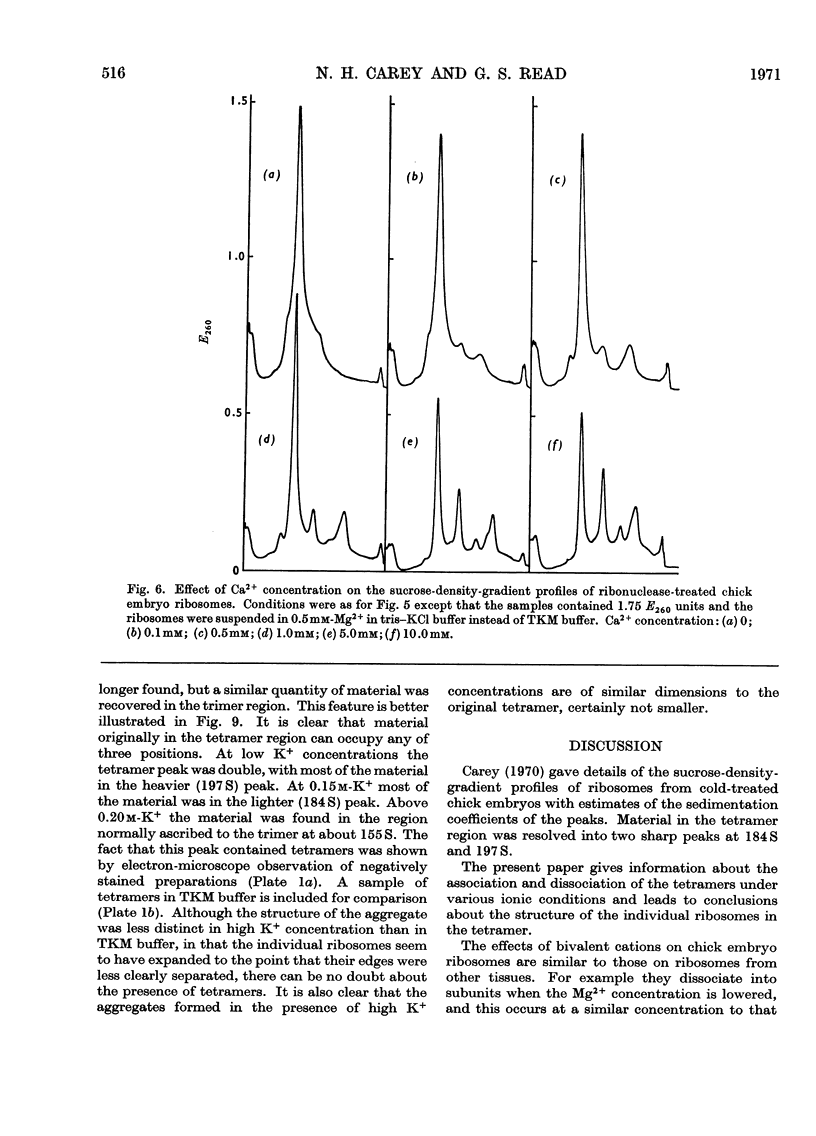
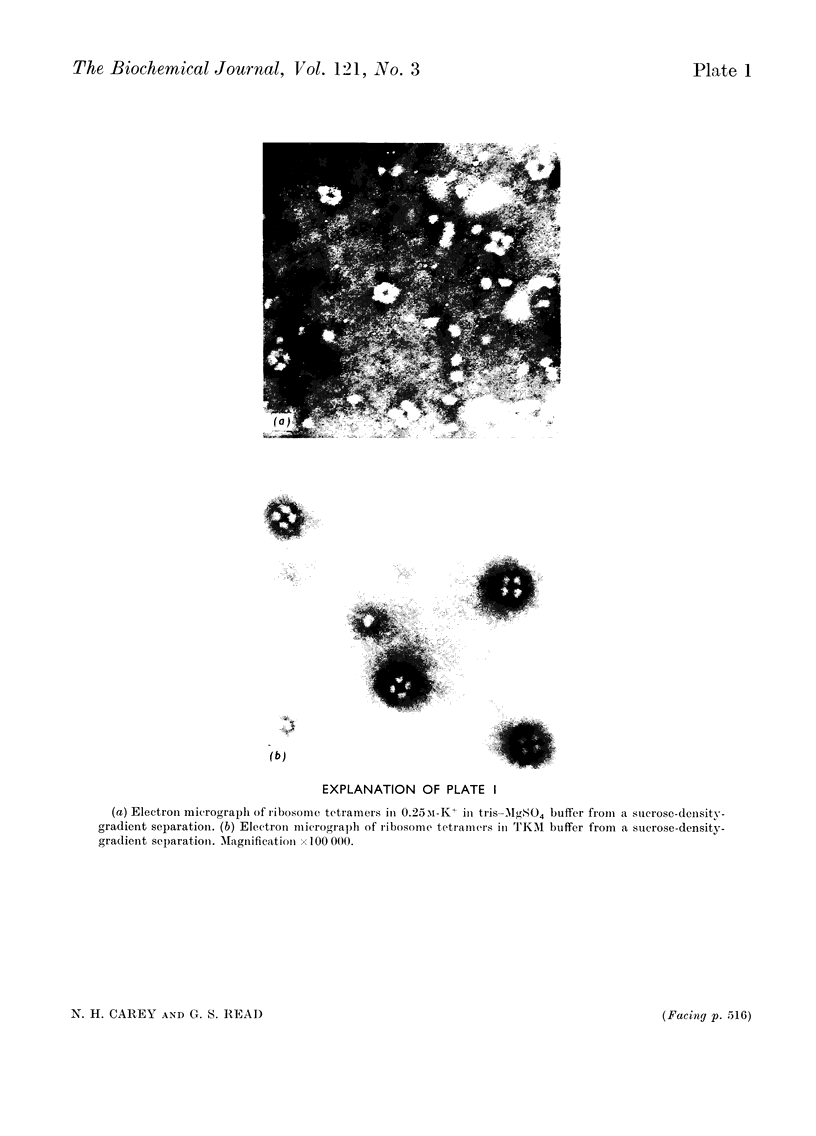
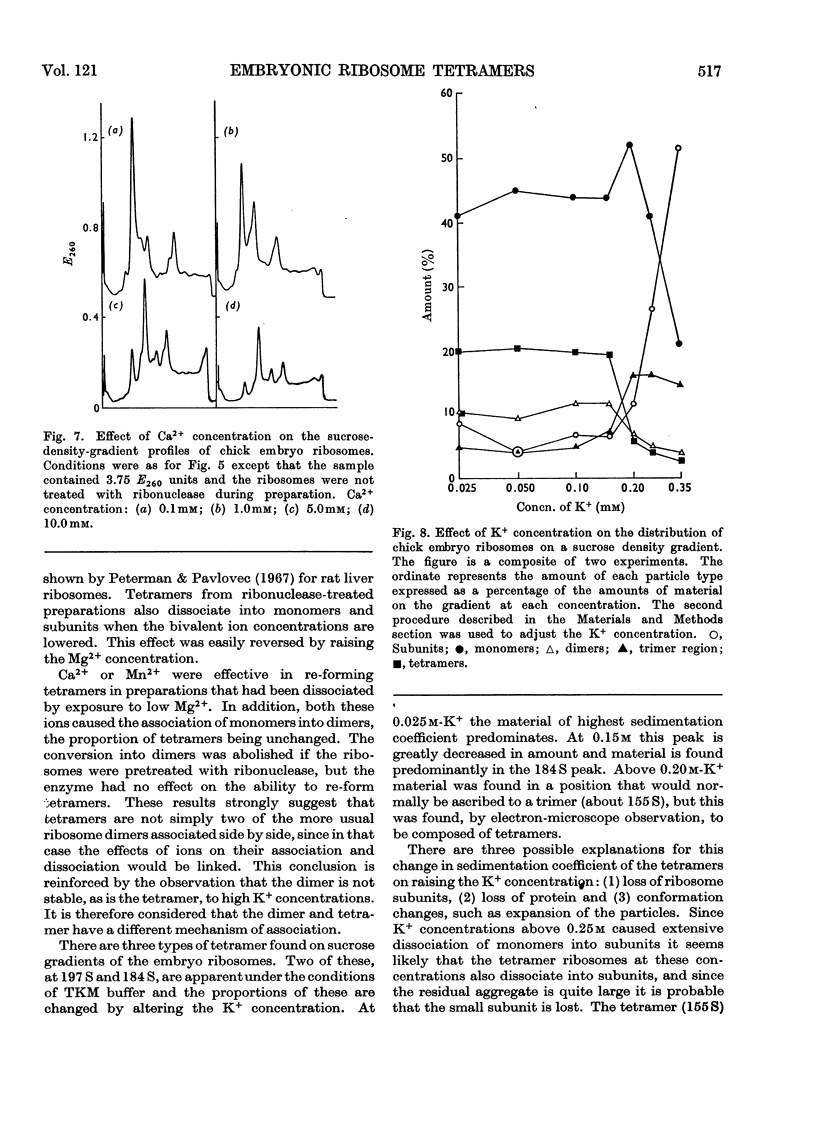
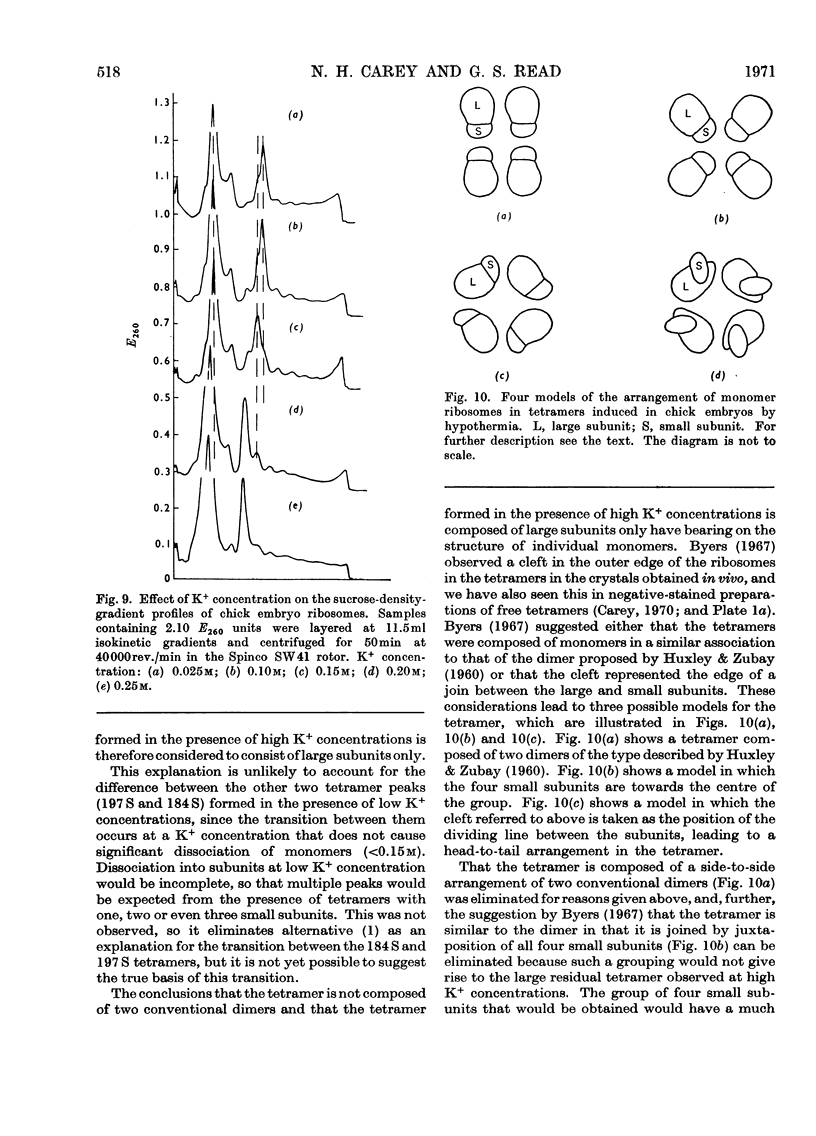
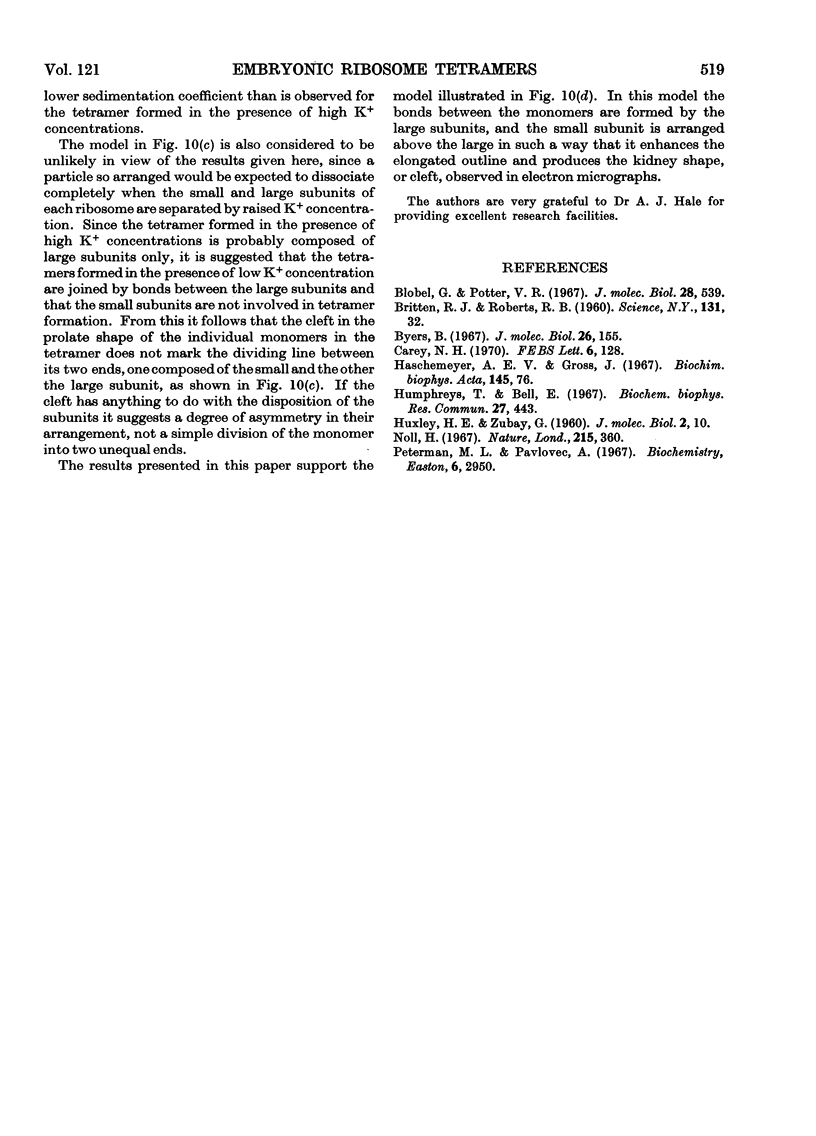
Images in this article
Selected References
These references are in PubMed. This may not be the complete list of references from this article.
- Blobel G., Potter V. R. Ribosomes in rat liver: an estimate of the percentage of free and membrane-bound ribosomes interacting with messenger RNA in vivo. J Mol Biol. 1967 Sep 28;28(3):539–542. doi: 10.1016/s0022-2836(67)80103-7. [DOI] [PubMed] [Google Scholar]
- Byers B. Structure and formation of ribosome crystals in hypothermic chick embryo cells. J Mol Biol. 1967 Jun 14;26(2):155–167. doi: 10.1016/0022-2836(67)90288-4. [DOI] [PubMed] [Google Scholar]
- Carey N. H. Ribosomal aggregates in chick embryo tissues after exposure to low temperatures. FEBS Lett. 1970 Jan 26;6(2):128–130. doi: 10.1016/0014-5793(70)80019-9. [DOI] [PubMed] [Google Scholar]
- Humphreys T., Bell E. The in vivo aggregation of chick embryo ribosomes in response to low temperature. Biochem Biophys Res Commun. 1967 May 25;27(4):443–447. doi: 10.1016/s0006-291x(67)80004-4. [DOI] [PubMed] [Google Scholar]
- Noll H. Characterization of macromolecules by constant velocity sedimentation. Nature. 1967 Jul 22;215(5099):360–363. doi: 10.1038/215360a0. [DOI] [PubMed] [Google Scholar]
- Petermann M. L., Pavlovec A. The effect of temperature on the magnesium binding and ultracentrifugal properties of rat liver ribosomes. Biochemistry. 1967 Sep;6(9):2950–2958. doi: 10.1021/bi00861a040. [DOI] [PubMed] [Google Scholar]



